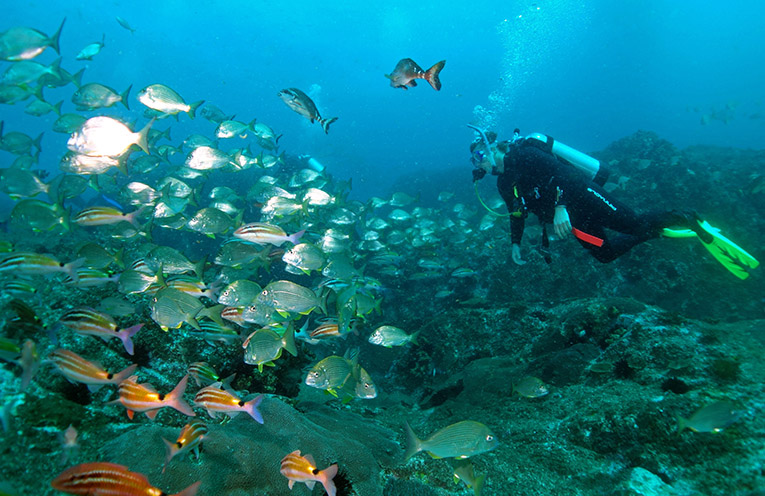
JOHN Turnbull has been surveying marine life around the Solitary Islands for more than 10 years.
He works with Reef Life Survey (RLS), an international, non-profit, citizen science program in which trained SCUBA divers undertake underwater surveys of reef biodiversity on rocky and coral reefs around the world.
A key aim of the organisation is to make the underwater world visible to the public and, especially, to people with the responsibility of managing reef systems.
 Advertise with News of The Area today.
Advertise with News of The Area today.It’s worth it for your business.
Message us.
Phone us – (02) 4981 8882.
Email us – media@newsofthearea.com.au
Research costs money, so using volunteers allows funds to be used more effectively.
However, to ensure quality control, RLS trains its volunteers in scientific survey techniques so that the data collected stands up to rigorous scrutiny.
Mr Turnbull said, “The data collected by volunteers is indistinguishable from that of marine scientists.”
RLS was started by scientists from the University of Tasmania and is now in 53 countries around the world.
On the Coffs Coast, John works with about six highly-trained volunteers from Solitary Islands Underwater Research Group (SURG).
They have conducted more than 250 surveys across 27 sites around the Solitary Islands and the marine park since 2009.
The group has recorded more than 450 different fish species.
Mr Turnbull said the Solitary Islands are a blend of temperate and tropical systems.
Cool water east coast species mingle with warm water species coming down from the Great Barrier Reef.
“You get a lovely blend of coral-based and kelp-based species,” he said.
According to Mr Turnbull, fish and invertebrates often settle on the basis of chemical cues, so the coral and kelp off the Solitary Islands provide a place for abundant diversity.
Kelp around the Solitary Islands is declining, partly because of climate change, as is plankton, which relies on nutrients in cooler waters.
Fish surveys are carried out over ‘transects’ of 50m long with 5m each side.
Second surveys are conducted for invertebrates over 50m by 1m each side transects.
The surveys also look at coral health and cover.
Divers record species and their size and abundance, and with approximately 50 species on every transect, researchers are kept busy.
The surveys are conducted from May to June every year and have yielded 10-year data about biodiversity.
This data indicates that the Solitary Islands are ‘looking good’ and defying the trends – with fish diversity and invertebrate diversity both improving over the past ten years, and Mr Turnbull infers that the marine park has been the main factor.
He said that divers are increasingly finding more and bigger fish.
Mr Turnbull said that the other main trend is that ‘tropicalisation’ is increasing.
This means that tropical fish species are increasing and temperate species are decreasing, particularly temperate species that rely on plankton.
The Ian Potter Foundation provided RLS with funds last year and this year so that more sites can be surveyed and the 2011 ‘Lap of OZ’, which surveyed close to 1000 sites, can be repeated this year.
By Andrew VIVIAN
